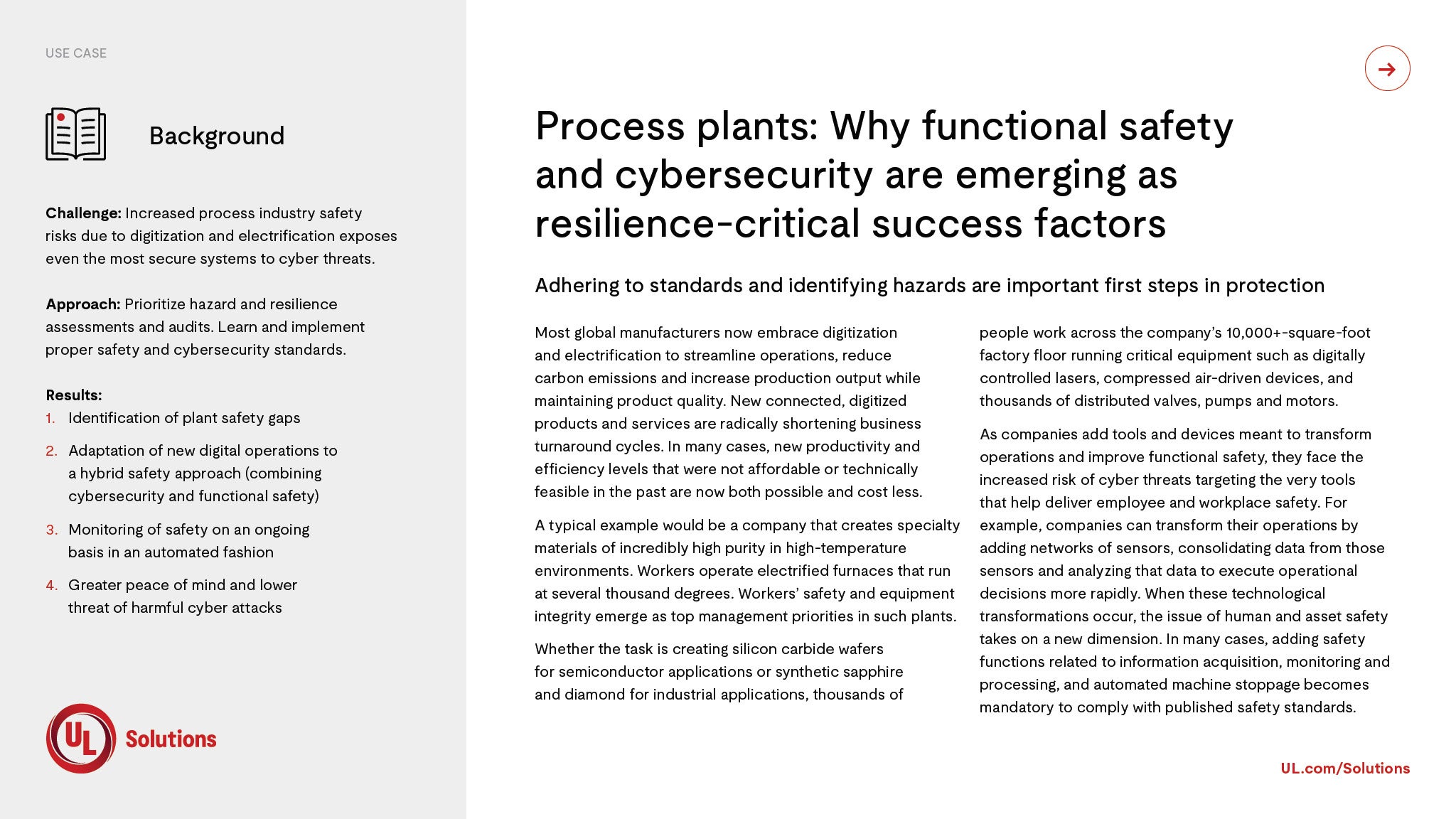Use case summary
Why cybersecurity and functional safety are emerging as resilience-critical success factors
Challenge
Increased process industry safety risks due to digitization and electrification exposes even the most secure systems to cyber threats.
Approach
Prioritize hazard and resilience assessments and audits. Learn and implement proper safety and cybersecurity standards.
Results
Identify safety gaps and adapt digital operation for continuous monitoring, peace of mind and reduced cyber threats.
“Almost half of all critical manufacturing across the globe faces a significant risk of a data breach.”
Overview
Adhering to standards and identifying hazards are important first steps in protection
Most global manufacturers now embrace digitization and electrification to streamline operations, reduce carbon emissions and increase production output while maintaining product quality. New connected, digitized products and services are radically shortening business turnaround cycles. In many cases, new productivity and efficiency levels that were not affordable or technically feasible in the past are now both possible and cost less.
A typical example would be a company that creates specialty materials of incredibly high purity in high-temperature environments. Workers operate electrified furnaces that run at several thousand degrees. Workers’ safety and equipment integrity emerge as top management priorities in such plants.
Whether the task is creating silicon carbide wafers for semiconductor applications or synthetic sapphire and diamond for industrial applications, thousands of people work across the company’s 10,000+-square-foot factory floor running critical equipment such as digitally controlled lasers, compressed air-driven devices, and thousands of distributed valves, pumps and motors.
As companies add tools and devices meant to transform operations and improve functional safety, they face the increased risk of cyber threats targeting the very tools that help deliver employee and workplace safety. For example, companies can transform their operations by adding networks of sensors, consolidating data from those sensors and analyzing that data to execute operational decisions more rapidly. When these technological transformations occur, the issue of human and asset safety takes on a new dimension. In many cases, adding safety functions related to information acquisition, monitoring and processing, and automated machine stoppage becomes mandatory to comply with published safety standards.
To find out how you can protect your plant, read the full use case.
Areas of expertise
Get connected with our sales team
Thanks for your interest in UL's products and services. Let's collect some information so we can connect you with the right person.


